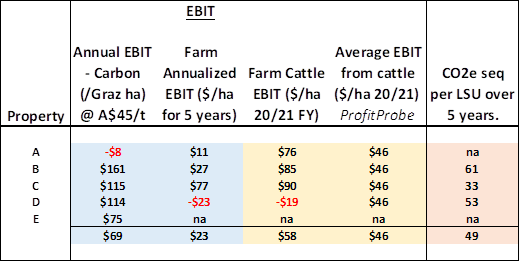
Dennis Donohoe, farm manager with Aminya Pastoral, is a seasoned producer with decades of experience, and his story is a testament to how even minor changes in farming practices can lead to significant improvements in productivity and land health.
So far the below have been covered off in the article Soil Carbon – Part 1;
This time, lets delve into the detail of getting involved in doing a project.
1. Start with an expression of interest to CarbonLink™. This is a simple step of providing some basic information such as property name(s) and area, generic soil types and rainfall. This information allows the CarbonLink™ staff to quickly evaluate the viability of a project for you. There is no cost to this for you.
2. You will be contacted to discuss the potential. It is not in anybody’s interest to encourage the uptake of projects that are not going to work or be viable. During these early conversations, there is an opportunity to discuss all your questions and issues.
3. Project planning. If the economics and practicality stack up, you can proceed to the planning stage. This involves a preliminary contract, developing the mandatory Land Management Strategy (LMS), submitting an application to the regulator, detailed mapping and site planning and developing a sampling plan. That will culminate in a quote. There is a lot of work in this stage so there will be a fee, which is rolled into the baselining cost if you proceed to a contract. During this phase it will also be determined which other types of projects you may be able to participate in e.g. forestry projects, emissions reduction projects etc. These will normally add to income.
4. You are the project proponent. This means that you own the project and the credits and they go into your account. Many other aggregators become the proponent. While that is simpler for you administratively, the credits do not go into your account first and the commission will be higher.
5. What are your risks? There are some risks to take into account. These include:
6. Is it likely to be worth my while? The data below comes from 6 properties which have sequestered carbon over the last 5 years and one which did not. I have compared the EBIT (Earnings Before Interest and Tax) from carbon on a per ha per annum basis to the same EBIT from Cattle production (where available).
These cell-grazed properties have been through 2 years of one of the worst droughts in a century. Despite this and other constraints such as flood, fire (E was completely burnt out in 2019) and disease (5 of the 7 have had pasture dieback through the period), soil carbon sequestration rates have exceeded expectations.

Of the 7 properties, totalling 20,892ha, only property A has so far failed to sequester carbon. A deep dive into the data indicates that this is a result of the equations, as the property had an increase in % SOC. This is yet to be rectified.
The data, currently being audited, indicates the severe impact of the drought, followed by very high cattle prices reducing restocking, on net profit per ha. The 20/21 FY data was included because that year represented the highest cattle prices in history in Australia. The production EBIT still failed to match the Carbon EBIT.
Read Dr Terry McCosker’s Soil Carbon – 101
Read Dr Terry McCosker’s Soil Carbon – Net Zero v Carbon Neutral
Soil Carbon – 5 questions to ask a carbon farming aggregator
For more information on Carbon farming talk to CarbonLink™
Author:

RCS Co-Founder
Related:
Have a listen to ‘The Financial Bloke’s’ Podcast interview with Terry McCosker, discussing the initial findings of one of the world’s largest Carbon Credit trials and more.
Profitable Paddocks is our educational newsletter sent to your email inbox every quarter.
Click the Bell for the latest blogs.

Dennis Donohoe, farm manager with Aminya Pastoral, is a seasoned producer with decades of experience, and his story is a testament to how even minor changes in farming practices can lead to significant improvements in productivity and land health.
Once you have ownership as to why planning is important, the next ingredient is to work out where and how you will do your planning. When you write something down you change your relationship with the content. I cannot emphasise enough the power of getting your thoughts and plans out of your head onto paper or the computer.
The season in SA and Tassie is particularly tight right now with little or no useful rain since early January and a generally failed 2023 spring prior to that. Right now, across southern Australia and much of the eastern NSW, you won’t need to drive far out into the countryside to see cattle and sheep grazing (and lying on) hay and silage trails lined across paddocks.
Martha Lindstad and partner Robert James are farm managers on ‘Karalee’, Enngonia NSW. Both have travelled different paths to being where they are. Martha is originally from Norway, growing up on a three hectare farm before travelling to New Zealand and eventually the Pilbara in Western Australia. It was here that she saw the benefits of sustainable farming for the country and livestock.
The Prince’s RCS mentor, Raymond Stacey, sees a strong future ahead for Simon and Laura. “The Drought Resilient Soils and Landscapes project is about supporting graziers to manage their country and businesses better,” Raymond said. “I see an operation here where they’re working hard on their planning and putting their plans into action to leave their country, business and people in better shape.”

Join our mailing list
